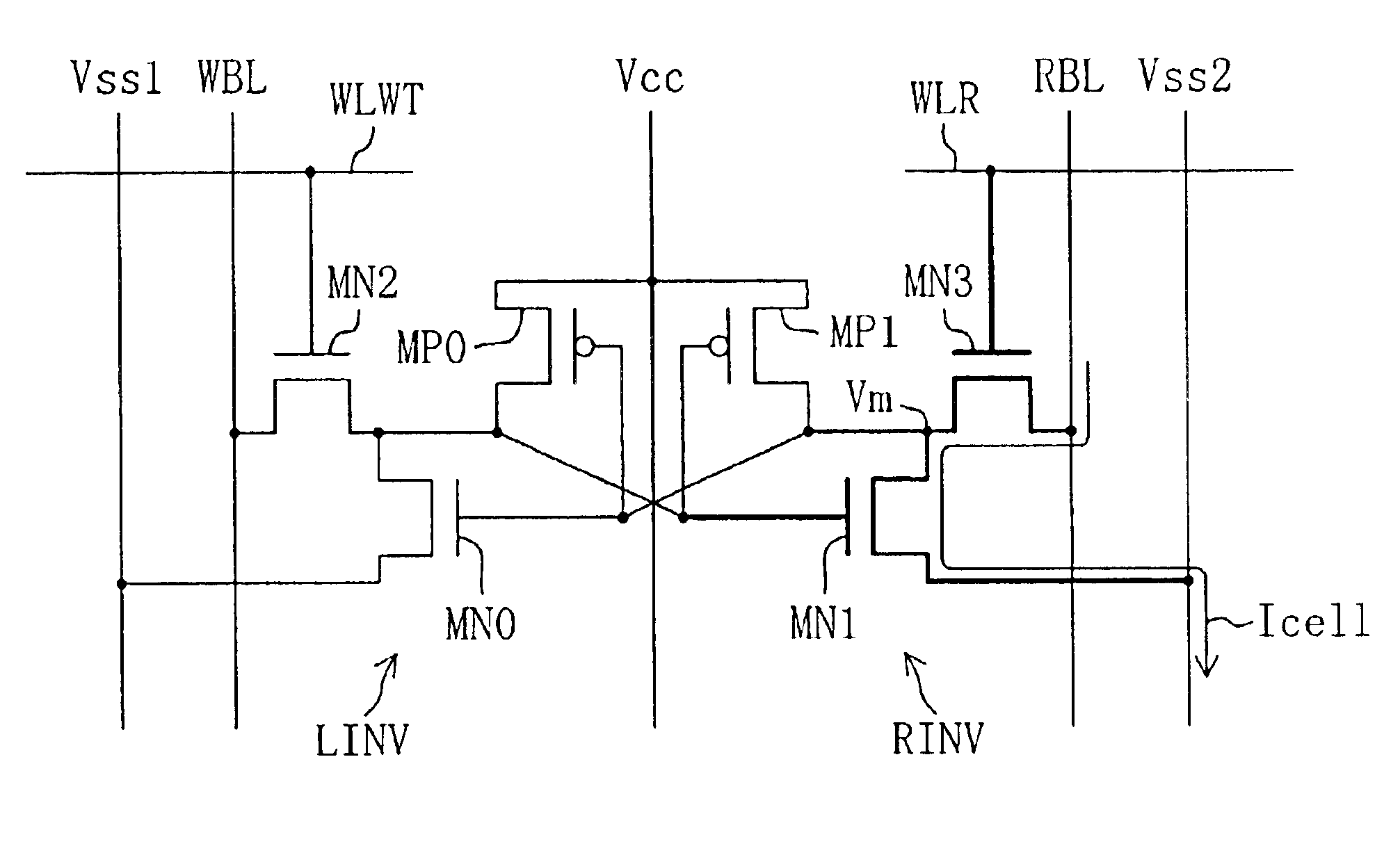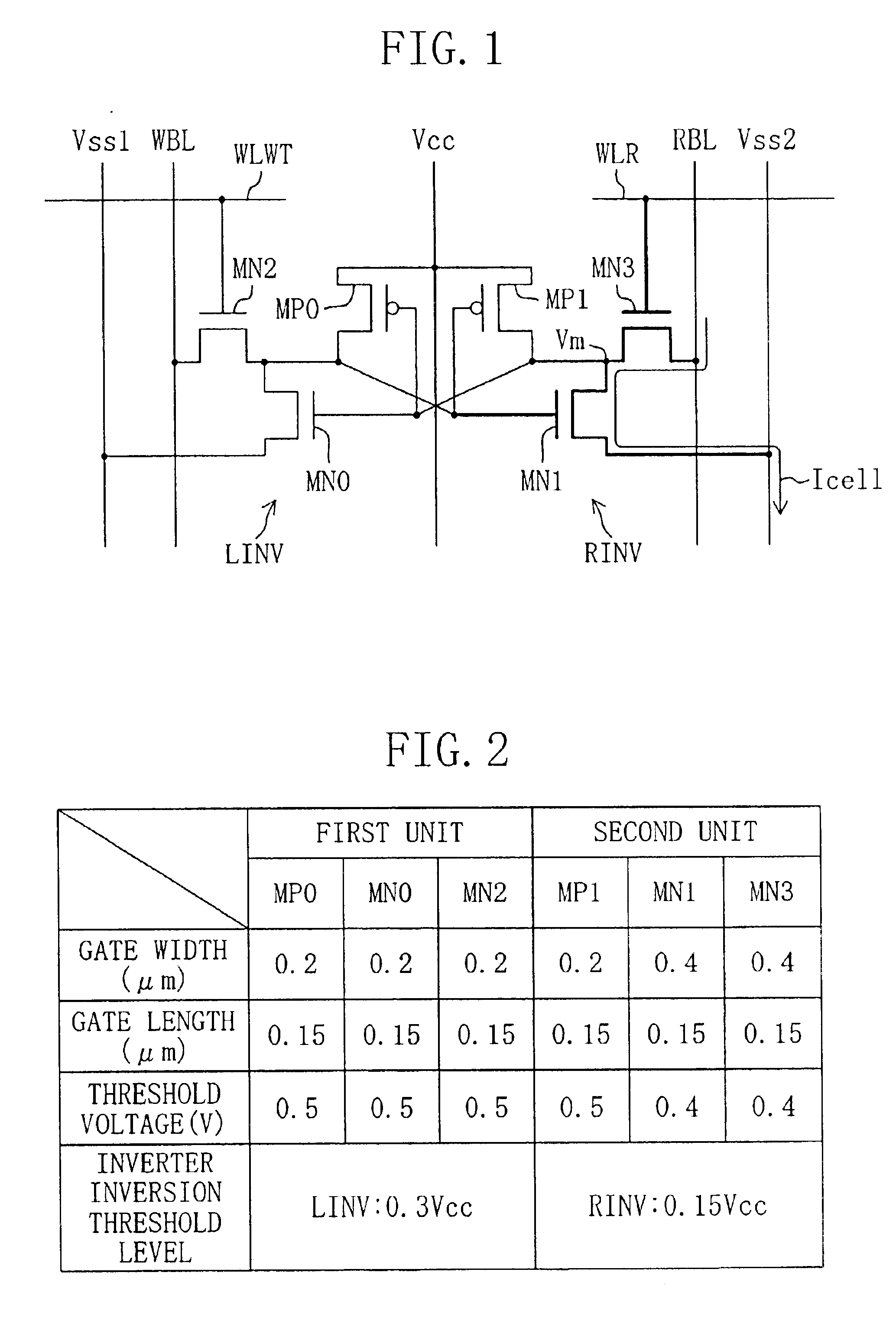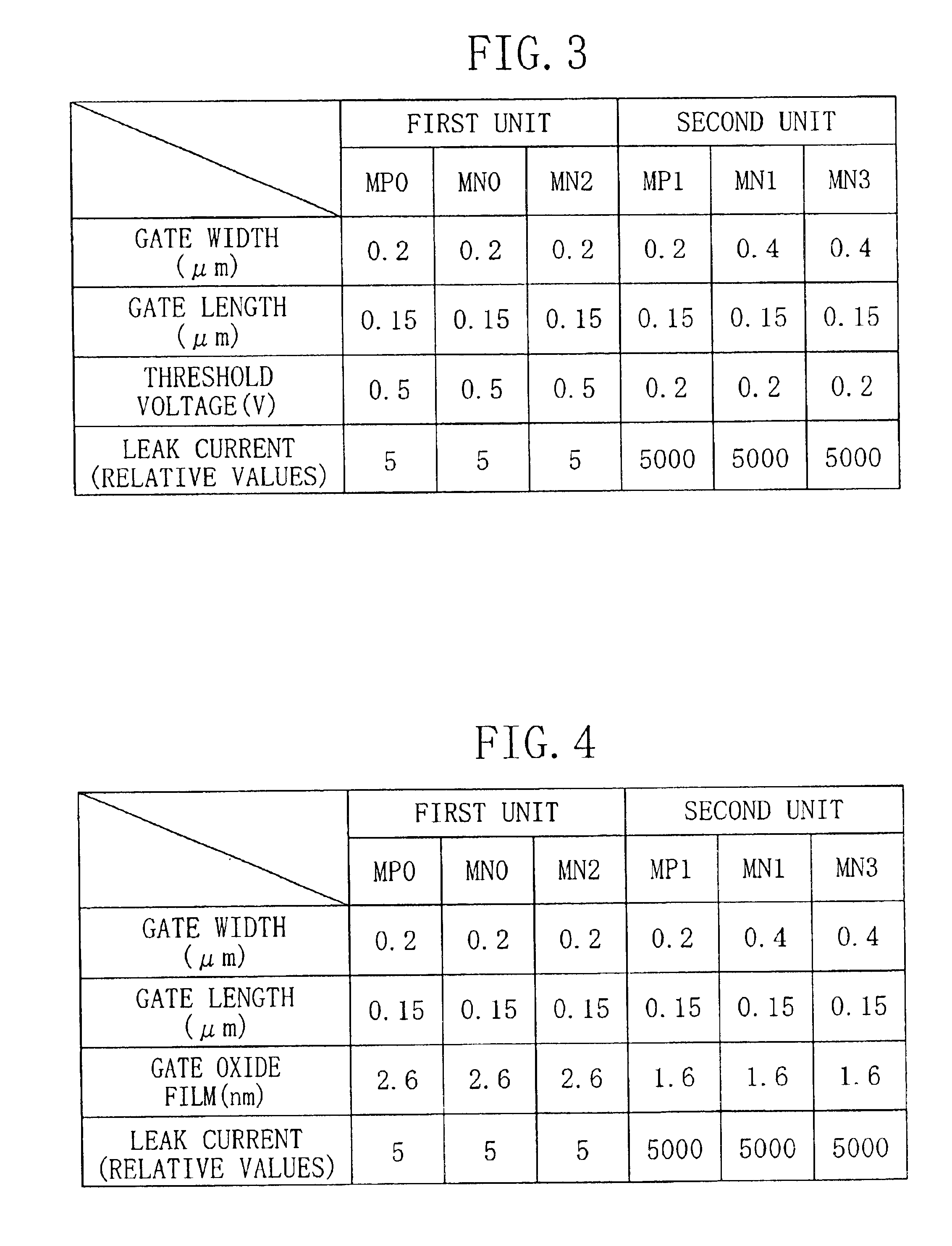SRAM device
- Summary
- Abstract
- Description
- Claims
- Application Information
AI Technical Summary
Benefits of technology
Problems solved by technology
Method used
Image
Examples
Embodiment Construction
[0022]FIG. 1 illustrates an exemplary configuration of an SRAM device of the present invention. Referring to FIG. 1, the SRAM device includes PMOS load transistors MP0 and MP1, NMOS drive transistors MN0 and MN1, and NMOS access transistors MN2 and MN3. MP0, MN0 and MN2 together form a first unit circuit. MP0 and MN0 together form an inverter (left inverter LINV), and the output of the inverter is connected to a write-only bit line (write bit line) WBL by MN2. The gate of MN2 is connected to a write-only word line (write word line) WLWT, and the source of MN0 is connected to a first source line Vss1. MP1, MN1 and MN3 together form a second unit circuit. MP1 and MN1 together form an inverter (right inverter RINV), and the output of the inverter (i.e., an intermediate node Vm) is connected to a read / write bit line (read bit line) RBL by MN3. The gate of MN3 is connected to a read / write word line (read word line) WLR, and the source of MN1 is connected to a second source line Vss2. The...
PUM
 Login to View More
Login to View More Abstract
Description
Claims
Application Information
 Login to View More
Login to View More - R&D
- Intellectual Property
- Life Sciences
- Materials
- Tech Scout
- Unparalleled Data Quality
- Higher Quality Content
- 60% Fewer Hallucinations
Browse by: Latest US Patents, China's latest patents, Technical Efficacy Thesaurus, Application Domain, Technology Topic, Popular Technical Reports.
© 2025 PatSnap. All rights reserved.Legal|Privacy policy|Modern Slavery Act Transparency Statement|Sitemap|About US| Contact US: help@patsnap.com



